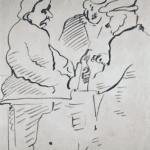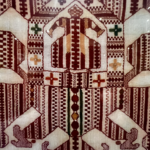In the 18th century, a new trend in icon-painting began to emerge in Russia. It made abundant use of Western realist techniques. Figures of saints gained weight and solidity, and the heavenly world of the icon was submitted to laws of gravity.
The 18th century witnessed the meeting of Russian Orthodox and Western art. The Russian emperor Peter the Great was a key agent of change. He sent Russian artists abroad to study Western art. They returned to Russia equipped with the knowledge of linear perspective and anatomy of human form. He also brought thousands of oil paintings from Holland and other European countries. Western influence poured into Russia through St. Petersburg, Peter’s “window to the West.”
Icons were not immune to change. Western elements entered the carefully guarded stronghold of traditional iconography.
The 18th century works of Yaroslavian artists have often been considered inferior to those of earlier periods. It is believed that realism defeats the meaning of the icon. Realist art imitates life while the purpose of the icon is to transcend life.
However, the colors of Yaroslavian icons did not fade away with the decline of traditional iconography. Yaroslavian artists of the period carefully preserved the recognizable local style of the Golden Age -17th century art. But they added a baroque decorative twist to their work. Yaroslavian icon-painters opened the traditionally unadventurous art of the icon to experimentation.
Many of the icons presented here were restored in recent years on private donations of Russian benefactors and have become available to viewers for the first time, (284)


